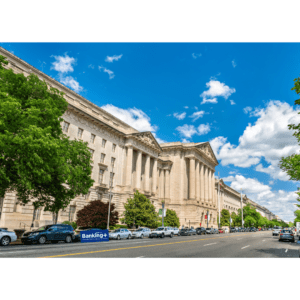The landscape for stablecoins is evolving rapidly, particularly with the new administration bringing key regulatory figures into focus. Gene Yoshida, a Berkeley, Calif., consultant working with sponsor banks, fintechs, and digital asset companies, emphasizes that while the leadership at financial regulatory agencies may not represent a radical shift, significant change is likely to come from Congress. His analysis took place in an interview he had with Travillian Principal of Banking & Fintech Search Keith Daly.
Two legislative efforts—the Stable Act and the Genius Act—are poised to define the future of stablecoins. Yoshida believes the Genius Act has a stronger likelihood of passing due to its bipartisan support and specific provisions, including federal regulatory oversight for issuers exceeding $10 billion in assets. “I have a feeling the Genius Act may be the one that goes through because I think it’s more specific in certain areas with regard to custody issuing it,” he says.
Why Banks Should Pay Attention to Stablecoins
While some banks remain cautious about entering the stablecoin space, Yoshida views this technology as the next logical step in financial evolution. “Stablecoins are going to be next level,” he explains. “Because they’re also creating a new payment layer, as well as programmable money by way of smart contracts.”
Beyond mere transactional efficiency, stablecoins allow for greater flexibility outside of traditional Federal Reserve rails, potentially enhancing yield opportunities for customers and offering secure, transparent payment solutions. However, Yoshida underscores that before diving in, banks should wait for regulatory clarity through congressional action.
Risk Management and Compliance Considerations
For banks looking to integrate stablecoin strategies, Yoshida stresses the importance of a strong risk management framework. Regulatory uncertainty has historically discouraged banks from engaging with digital assets, with agencies like the SEC enforcing compliance through case-by-case actions rather than clear rules. “The SEC in particular took a position of enforcement by action. So rather than laying out what the rules are and then bringing down the hammer if people don’t comply with those rules, it was more, ‘When we see it, we’ll know it,’” he notes.
If banks decide to proceed with stablecoin initiatives, they must prioritize hiring professionals who understand both financial risks and financial crime compliance. Blockchain analytics tools such as TRM Labs, Elliptic, and Chainalysis can help banks track transactions and assess risks associated with stablecoins.
Yoshida also highlights the importance of evaluating stablecoin issuers’ proof of reserves to ensure assets are backed by government treasuries or other liquid, USD-denominated instruments, as outlined in the proposed Genius Act. “The Genius Act dictates what are the types of investments that they can be in,” he says. “And they are all government-related treasuries or money-market funds that are USD denominated: very liquid and fairly short term.”
The Role of Community Banks and Digital Asset Firms
Yoshida notes a surge in interest from digital asset firms seeking banking partnerships, particularly since mid-2024. However, the collapse of institutions like Signature and Silvergate has made it challenging for community banks to engage in this space. Many banks are adopting a “wait and see” approach, seeking clearer legislative guidelines. Meanwhile, certain fintech infrastructure providers are actively working to bridge the gap between banks and stablecoin issuers.
Predictions for the Future of Stablecoins in Banking
Looking ahead, Yoshida is optimistic about the integration of stablecoins within the banking sector. “I think some of these OCC charter banks will ask the OCC for permission approval to engage in stablecoins in particular. Maybe some will even go further and engage in broader crypto,” he predicts. If this occurs, stablecoins could become a fundamental component of the financial system, opening doors for innovative financial products and services.
In addition, Yoshida speculates that the federal government may revisit the idea of a Central Bank Digital Currency (CBDC) despite recent executive orders halting its development. “I think that could be a really interesting idea, especially as we approach 2030 where it may be difficult to fund Social Security or some other mandated programs,” he says.
Banks’ Call to Action
Stablecoins are here to stay, and banks must prepare for their inevitable role in the financial system. Yoshida advises banks to proactively build risk and compliance expertise while staying informed about regulatory developments. As stablecoin adoption grows, banks that position themselves strategically will be best equipped to navigate this transformative era in financial services.
The complete interview can be found at Travillian Next.



















